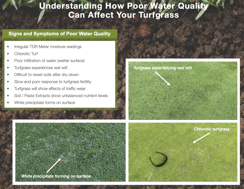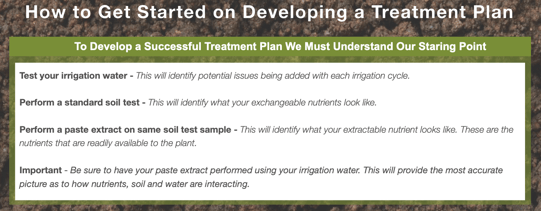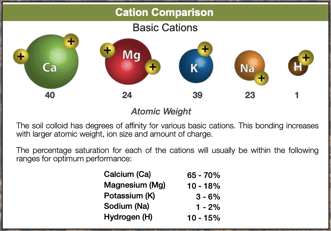September 15th is a day that is of significant value. One, it is my birthday, which as the years go by, has more significant value it seems. The date was of agronomic significance when I was a golf course superintendent growing Bentgrass here in the Southeast. It was the date that I always circled on my calendar as the day I thought we could see the light at the end of the tunnel after a long season. We always sat down as a team and discussed what did we need to do to recover and make sure we were setting ourselves up for a successful season next year.
Far too many times in the agronomic world we see things fall apart quickly. These are the times when you realize the amount of time it takes to build back the basics and have a firm hold on your agronomic programs. Soil tests were always high on our list of items to complete in that first 30 days of fall. We were dealing with bad water and extreme environmental stress each year. We always wanted to see what did we need to apply or amend in the off season in order for us to have our reserves in alignment before the start of our next season. In todays’ world I often see quite a bit on social media about the minimum input models that are being used in agronomic programs.
Over the past two years I have seen this form of management get some people in trouble. It’s not that the minimum input model is the sole cause of these problems, its the fact that the turf manager didn’t understand all the factors that need to be looked at before trying to implement these programs. Those that deal with bad water need to realize that water alone has a huge influence on how these soils will influence the nutrient and microbiological world in which their turfgrass is growing.

You must have a balanced base in your exchangeable soil test, and a good understanding of how your irrigation water affects those exchangeable sites when looking at a paste test and how this changes your extractable results.
Each time I speak to a group of people about soils I always tell people that if they take exchangeable tests and a paste test using their own irrigation water it will never be the same. If so, I offer free money or product to someone that can prove it to me. Never had one person come to me in the past 8 years, so my statements seem safe.

It’s all about having the correct volume of the Cations within the soil profile so that your soils and turf can handle the environmental and mechanical stresses that occur during the season. In simpler terms, think of it as a car. The engine and transmission is the exchangeable tests and the fuel that you put into the car is the extractable tests. In order for the car to operate in an efficient manor and perform to your expectation all parts must be working properly. In order for the engine to perform you must do routine maintenance at certain mileage intervals. Think of your granular inputs to help balance your exchangeable sites as this level of maintenance. The car must have fuel in order to be drivable and move forward when you hit the gas pedal. Think of your paste extract results to be the fuel in the car. This is what is immediately available to the plant. You must have your Calcium, Magnesium, and Potassium to be in the right percentages in order to fight off the Sodium and Hydrogen.

If these tests are looked at during your offseason and the proper inputs are made to balance your soils to correct levels for the turfgrass in which you are managing, then these minimum input programs can be used during your season and be more successful. Remember, Mother Nature will always throw you a curve ball. Issues will occur and thin turf will happen at times, you need to make sure you have enough in your soils to help you be able to recover and allow your foliar inputs to complement your recovery in a timely manner.
- Sam Green, President, AQUA-AID Solutions
